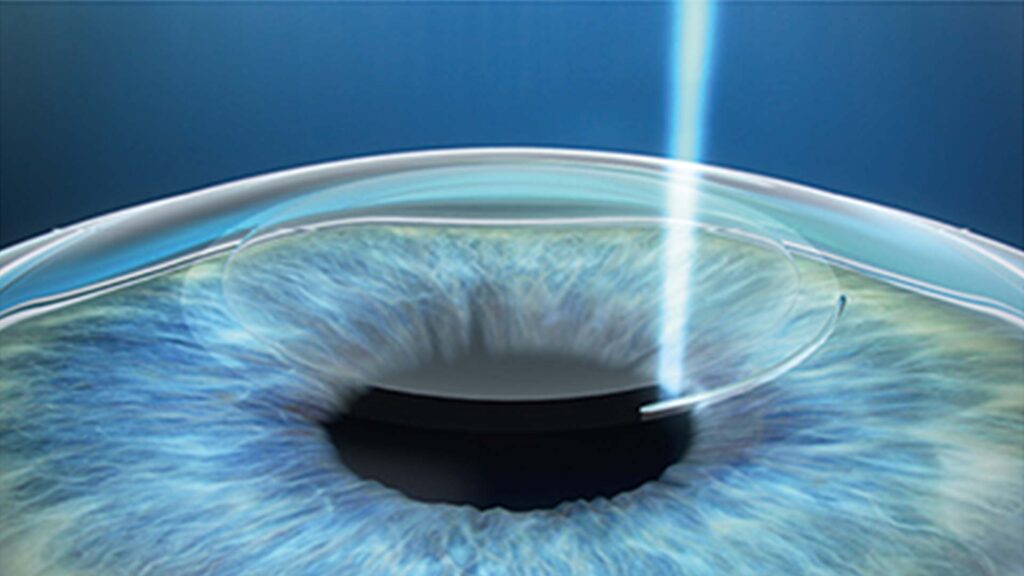LASIK Eye surgery has rapidly gained popularity as a safe and effective way to correct vision problems. If you’ve been struggling with glasses or contact lenses, LASIK could be the solution you’ve been searching for. In this article, we will explore the basics of LASIK, including what it is, the science behind it, and the benefits it offers. We’ll also discuss the procedure itself, as well as post-surgery care and recovery. Lastly, we’ll address common concerns about LASIK, debunking myths and discussing the safety and risks involved.
Understanding the Basics of LASIK Eye Surgery
It is important to note that while LASIK eye is highly effective for the majority of patients, there are potential risks and complications associated with the surgery. These may include dry eyes, glare, halos, and difficulty driving at night. However, advancements in technology and surgical techniques have significantly reduced the occurrence of these side effects, making LASIK a safe and popular choice for vision correction.
What is LASIK Eye Surgery?
LASIK stands for “Laser-Assisted in Situ Keratomileusis,” and it is a surgical procedure that aims to correct various vision problems. By reshaping the cornea, LASIK can improve refractive errors such as nearsightedness, farsightedness, and astigmatism. The result is clearer vision without the need for glasses or contact lenses.
Before undergoing LASIK surgery, patients typically undergo a comprehensive eye examination to determine their eligibility for the procedure. Factors such as corneal thickness, pupil size, and overall eye health are taken into consideration to ensure the best possible outcome. It is essential for individuals considering LASIK to have stable vision for at least a year before the surgery.

The Science Behind LASIK
The success of LASIK lies in its ability to reshape the cornea, the clear front surface of the eye. During the procedure, a surgeon creates a thin flap on the cornea using either a microkeratome (a blade device) or a femtosecond laser (a laser device). Once the flap is lifted, a specialized laser is used to remove or reshape the corneal tissue according to the patient’s prescription. As the cornea heals, the new shape allows light to focus properly on the retina, resulting in improved vision.
The Benefits of LASIK Eye Surgery
Vision Improvement and Correction
One of the most significant benefits of LASIK is the improvement in vision. Many people experience a dramatic difference in their eyesight immediately after the procedure, with some achieving 20/20 vision or better. The correction of refractive errors allows for clearer and sharper vision in both near and distant objects.
Furthermore, LASIK is known for its quick recovery time, with most patients able to resume normal activities within a day or two. This means that individuals can swiftly return to work, sports, and other daily tasks without the inconvenience of a prolonged healing process.
The Long-Term Advantages of LASIK
Besides achieving immediate visual improvement, LASIK offers long-term advantages as well. Unlike glasses or contact lenses, which need constant maintenance and replacements, LASIK provides a permanent solution to vision problems. Many patients enjoy clear vision for years without the need for additional procedures or visual aids.
Moreover, LASIK can enhance quality of life by eliminating the hassle of dealing with glasses or contacts. Activities such as swimming, exercising, or simply waking up in the morning become much more convenient when one no longer has to rely on corrective eyewear. This newfound freedom and independence are invaluable to those who have undergone LASIK surgery.
The LASIK Eye Surgery Procedure
Read more: The Ultimate Guide to LASIK Eye Surgery
Pre-Surgery Preparations
Before undergoing LASIK, it is essential to have a thorough evaluation with an eye care professional. They will assess your eligibility for the procedure, evaluate your eye health, and determine your refractive error. Preparations may include discontinuing the use of contact lenses for a specific period before the surgery to ensure accurate measurements during the evaluation.
Additionally, during the pre-surgery preparations, the eye care professional will discuss the potential risks and benefits of LASIK surgery with you. It is crucial to have a clear understanding of what to expect during and after the procedure to make an informed decision about moving forward. They will also provide detailed instructions on how to prepare for the surgery day, including guidelines on eating, drinking, and any medications that need to be adjusted.
Step-by-Step Procedure Overview
The LASIK procedure itself is relatively quick, usually taking less than 30 minutes. Local anesthesia is administered, ensuring a painless experience. Once the eye is numb, the surgeon creates a flap on the cornea and then uses the laser to reshape the underlying tissue. The flap is carefully repositioned, and the healing process begins. Most patients experience improved vision immediately after the surgery, with further enhancements over the following days and weeks. Find more about anesthesia on https://www.nigms.nih.gov/education/fact-sheets/Pages/anesthesia.aspx
After the procedure, patients are typically advised to rest for a few hours to allow the eyes to heal. It is common to experience some mild discomfort, dryness, or blurry vision initially, but these symptoms usually subside as the eyes heal. Follow-up appointments with the eye care professional are essential to monitor the healing process and ensure that the eyes are responding well to the surgery. It is crucial to follow all post-operative care instructions diligently to optimize the results of the LASIK procedure.
Post-Surgery Care and Recovery
What to Expect After Surgery
Following LASIK, it is normal to experience some mild discomfort or irritation in the eyes. However, this typically subsides within a day or two. Your eye care professional will provide specific instructions for post-surgery care, including the use of prescribed eye drops. It’s essential to attend all follow-up appointments to monitor your healing progress and address any concerns.
During the initial recovery period, you may notice fluctuations in your vision, such as dryness or glare. These are common side effects that often improve over time as your eyes adjust to their new shape. It’s important to be patient and allow your eyes to heal naturally. Be sure to get plenty of rest and avoid straining your eyes by staring at screens for prolonged periods.
Tips for a Smooth Recovery
To promote a smooth recovery, it’s crucial to follow your doctor’s guidance. Avoid rubbing your eyes, as this can interfere with the flap and hinder the healing process. Protect your eyes from excessive sunlight and dust by wearing protective eyewear outdoors. Also, refrain from strenuous activities or swimming for a short period, as recommended by your doctor. By adhering to these guidelines, you can support proper healing and achieve optimal results.
In addition to following your doctor’s instructions, maintaining good overall eye health is essential for a successful recovery. Ensure you stay hydrated by drinking plenty of water, as dehydration can contribute to dry eyes. Incorporate foods rich in vitamins and nutrients, such as leafy greens and fish high in omega-3 fatty acids, to support your eye’s healing process. Proper nutrition plays a significant role in promoting eye health and overall well-being.
Addressing Common Concerns About LASIK
Debunking LASIK Myths
Despite its proven success, LASIK is still surrounded by misconceptions and myths. It’s important to address these concerns to help individuals make well-informed decisions. Myths such as LASIK being painful, having a high risk of complications, or causing long-term side effects are widely debunked. Understanding the facts and consulting with a qualified surgeon can help dispel any unfounded fears.

Safety and Risks of LASIK Surgery
As with any surgical procedure, LASIK does involve some risks. However, it is crucial to note that serious complications are rare. A thorough screening process and selecting an experienced surgeon minimize the chances of adverse outcomes. Potential risks and side effects, such as dry eyes or temporary fluctuations in vision, are discussed during the consultation phase. It’s essential to openly communicate with your surgeon to address any concerns regarding the safety of LASIK. To know more about risks click here.
Furthermore, it is important to note that LASIK surgery has evolved significantly over the years, with advancements in technology and techniques. Surgeons now have access to state-of-the-art equipment and tools that enhance the precision and safety of the procedure. The use of femtosecond lasers, for example, allows for a more precise and controlled corneal flap creation, reducing the risk of complications.
Moreover, the recovery process after LASIK surgery is typically quick and relatively painless. Most patients experience improved vision within a day or two, with minimal discomfort. The surgeon will provide detailed post-operative instructions to ensure a smooth recovery and minimize any potential side effects.

